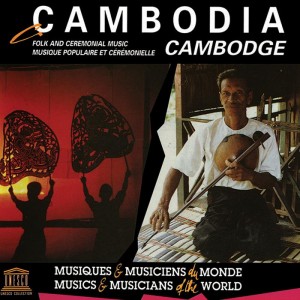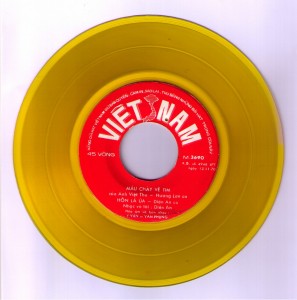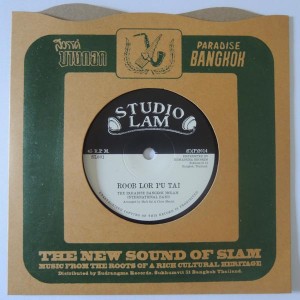Monthly Archives: October 2014
UNESCO Cambodia: Folk and Ceremonial Music (UNES08068) & Royal Music (UNES08011)
Smithsonian Folkways is currently re-releasing the UNESCO Collection of Traditional Music catalog as custom CD or download. The latest re-releases from Southeast Asia are two excellent albums of Cambodian music.
Cambodia: Folk and Ceremonial Music
Traditional Cambodian ceremonial orchestras may be divided into two groups: those composed of string and wind instruments and those that are primarily percussion ensembles using keyed metallophones, gongs, and xylophones (pinpeat orchestras). This album, recorded between 1966 and 1968, features both. Historically, the pinpeat orchestras, often with several hundred musicians, performed ceremonial music for the Brahmins (the highest ranking caste) or the king. This recording captures the essence of the distinctive musical forms that have survived since the 11th century.
In addition, Master Srey-Yim performs solos on the tro khmer, a three-string bowed instrument, and the sadev, a gourd monochord, in a folk music orchestra. Also heard is the chapey, a two-string lute that is ideal for accompanying vocal improvisations because of its technical possibilities and the effects of attacking the strings in different ways. The album includes music for weddings, boxing matches, and shadow theater.
The roots of Cambodian music trace back to the ninth century and the establishment of the Khmer Empire. Cambodian music was based on systems that originated in the local culture, using instruments indigenous to the Indo-Chinese peninsula like bronze gongs and bamboo xylophones. Contemporary Cambodian orchestras are modest compared to the Khmer Empire era grand ensembles, which sometimes featured hundreds of musicians, but they remain reflective of the musical art form.
This 1971 recording features sacred royal Khmer music performed by ensembles of the Royal Palace orchestra and choir. The liner notes describe the origins of Cambodian (Khmer) music and the important role played by the Royal Palace in its preservation and performance. The liner notes also provide a brief description of each of the compositions.
VB005
Phuong Dai EP (Vietnam Disc Agency 3689 & 3690)
A big thank you to ThaoAnh for the translation!
Tâm sự đời tôi (My life confidence)
Người xa người (Person away from person)
Máu chảy về tim (Back to our heart)
ชินชัย ธรรมพิลา เสนอหมอลำคณะ เพชร พลาญชัย
Chinchai Thamphila presents the Petch Phalanchai Molam Band . . .
ลำเพินเกี้ยวตำรวจตระเวนชายแดน (Border Police Flirting Lam Plearn by the Petch Phalanchai Molam Band with vocals by Phuanpraka Petchphalanchai)
ลำเพินเรียกแฟน (Calling My Lover Lam Plearn by the Petch Phalanchai Molam Band with vocals by Phimjai Petchphalanchai)












